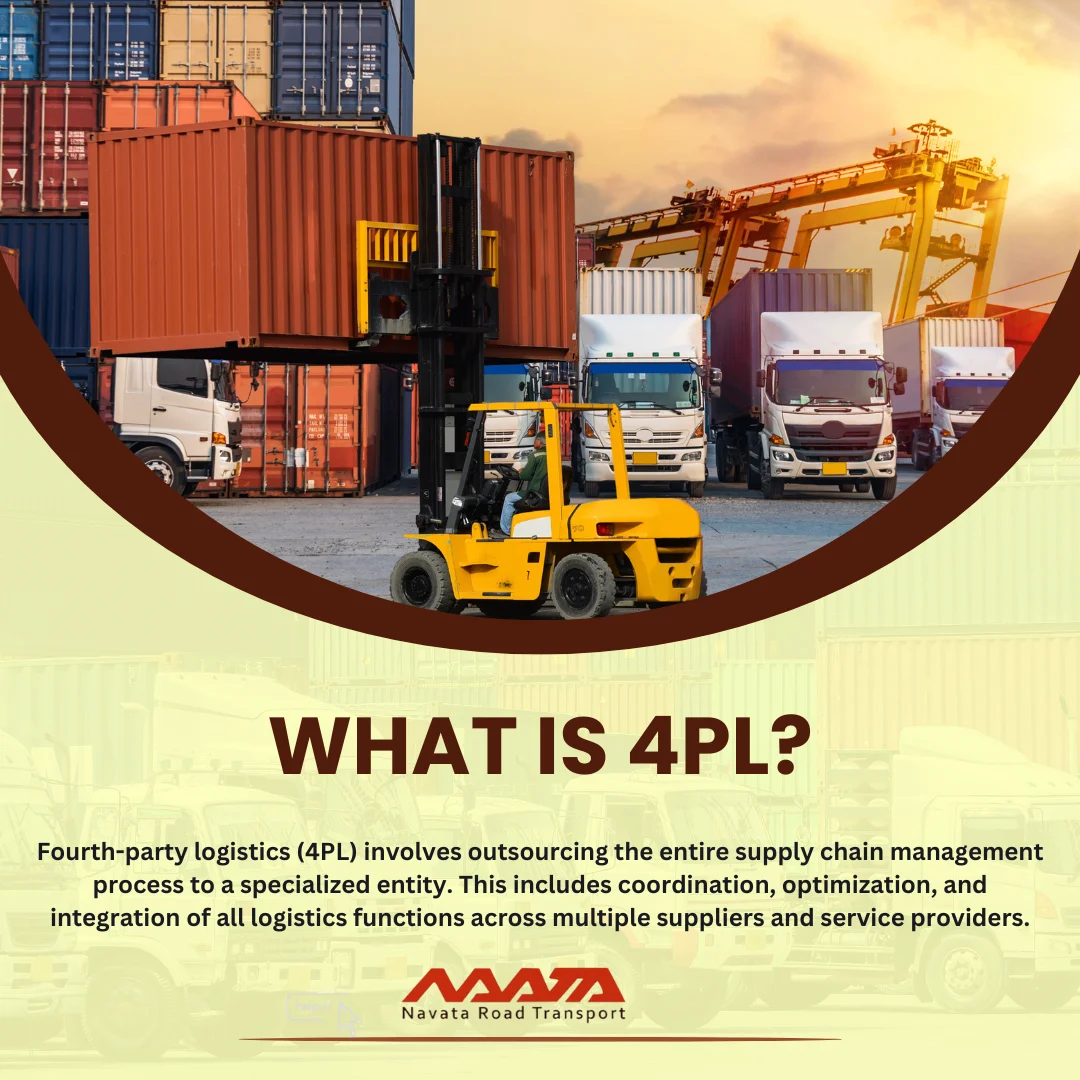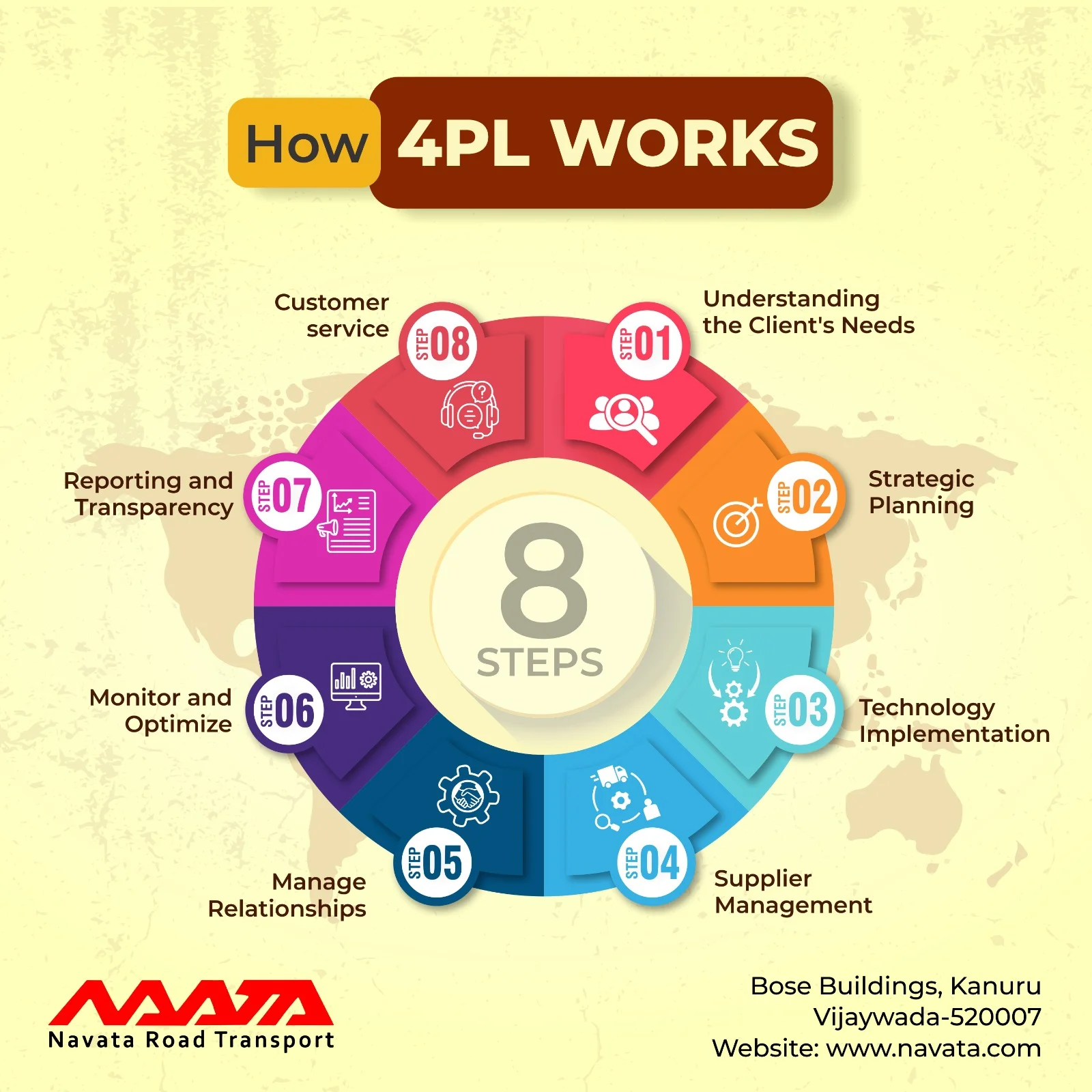What is 4PL and How 4PL Works?
Table of Contents
What is 4PL
4PL stands for Fourth Party Logistics. It is an extension of the concept of third-party logistics (3PL) but involves an additional layer of management and coordination in the supply chain.
In a typical logistics setup:
First Party (1PL)
The manufacturer or producer of goods.
Second Party (2PL)
The sender or owner of the goods.
Third Party (3PL)
An external logistics provider that manages and executes logistics functions on behalf of the first and second parties, such as transportation, warehousing, and distribution.
Now, when we introduce a fourth party (4PL), it refers to an external entity that takes on a more comprehensive role in managing the entire supply chain. The 4PL provider acts as a supply chain integrator, overseeing and coordinating various logistics services provided by multiple 3PLs or other service providers. The 4PL is often responsible for strategic planning, optimization, and overall supply chain management.
In essence, a 4PL is not directly involved in the physical movement of goods but focuses on optimizing and coordinating the entire supply chain to improve efficiency and reduce costs for the companies involved. The 4PL model is designed to offer a higher level of strategic insight and control over the supply chain, allowing companies to focus on their core competencies.

How 4PL Works
In the dynamic landscape of global supply chains, businesses are constantly seeking ways to optimize their logistics operations. The rise of Fourth Party Logistics (4PL) has emerged as a strategic solution for companies looking to streamline their supply chain processes. In this comprehensive guide, we will delve into the intricacies of how 4PL works, emphasizing key components such as understanding client needs, strategic planning, technology implementation, supplier management, relationship management, monitoring and optimization, reporting and transparency, and customer service.
Understanding the Clients' Needs
At the core of 4PL logistics is a deep understanding of clients’ unique requirements. This involves collaborating closely with clients to gain insights into their business goals, supply chain challenges, and specific needs. A robust understanding of the clients’ operations lays the foundation for crafting tailored logistics solutions that enhance efficiency and reduce costs.
4PL providers conduct in-depth consultations, analyzing the intricacies of clients’ supply chains. This includes assessing current logistics processes, identifying pain points, and understanding the market dynamics in which the client operates. Through this collaborative approach, the 4PL provider gains valuable insights that shape the subsequent stages of strategic planning.
Strategic Planning
Once the clients’ needs are thoroughly understood, the 4PL provider engages in strategic planning. This phase involves developing a comprehensive logistics strategy that aligns with the clients’ business objectives. Strategic planning includes route optimization, inventory management, and contingency planning to address potential disruptions in the supply chain. The goal is to create a roadmap that maximizes efficiency and minimizes risks.
Strategic planning in 4PL logistics encompasses a holistic view of the supply chain. This involves identifying the most efficient transportation routes, optimizing warehouse layouts, and developing strategies for demand forecasting. The 4PL provider collaborates with clients to establish key performance indicators (KPIs) that will be used to measure the success of the logistics strategy.
Technology Implementation
In the digital era, technology plays a pivotal role in optimizing logistics operations. 4PL providers leverage advanced technologies such as artificial intelligence, data analytics, and Internet of Things (IoT) devices to enhance visibility, traceability, and overall supply chain efficiency. Implementing a robust technology infrastructure enables real-time tracking of shipments, inventory management, and data-driven decision-making.
The implementation of technology in 4PL logistics goes beyond basic tracking systems. It involves the integration of sophisticated software solutions that provide predictive analytics, allowing the 4PL provider to anticipate potential issues and proactively address them. Automated systems streamline routine tasks, reducing the likelihood of errors and improving overall efficiency.
Supplier Management
Efficient supplier management is a critical aspect of 4PL logistics. This involves selecting, onboarding, and managing a network of reliable suppliers. The Fourth Party Logistics provider acts as a liaison between the client and suppliers, ensuring seamless communication, timely deliveries, and adherence to quality standards. Effective supplier management contributes to the overall reliability and resilience of the supply chain.
Supplier management in 4PL logistics is a continuous process. It begins with a thorough evaluation of potential suppliers, considering factors such as reliability, capacity, and geographic reach. Once suppliers are onboarded, the 4PL provider establishes clear communication channels and performance metrics. Regular assessments ensure that suppliers meet agreed-upon standards and allow for adjustments to the supplier network based on changing business needs.
Manage Relationships
Building and maintaining strong relationships are fundamental to the success of 4PL logistics. The 4PL provider fosters collaborative partnerships with clients, suppliers, carriers, and other stakeholders. Clear and open communication channels are established to facilitate information flow, resolve issues promptly, and adapt to changing business dynamics. Robust relationship management enhances trust and promotes a unified approach to achieving common goals.
Relationship management in 4PL logistics extends beyond the immediate client-supplier relationship. It involves creating a network of interconnected partnerships that contribute to the overall efficiency of the supply chain. This includes fostering relationships with transportation providers, customs agencies, and other entities involved in the logistics process. The 4PL provider serves as a central point of contact, ensuring that all stakeholders are aligned with the strategic objectives of the supply chain.
Monitor and Optimize
Continuous monitoring and optimization are key pillars of 4PL logistics. Through the use of data analytics and performance metrics, the 4PL provider tracks the performance of the supply chain in real-time. This proactive approach allows for quick identification of bottlenecks, inefficiencies, and areas for improvement. By constantly optimizing logistics processes, the 4PL provider ensures adaptability to market changes and evolving client needs.
Monitoring in 4PL logistics involves the use of advanced analytics tools that provide real-time insights into key performance indicators. These metrics include on-time delivery rates, inventory turnover, and transportation costs. By analyzing this data, the 4PL provider can identify patterns, forecast potential issues, and implement corrective measures before they impact the supply chain. Continuous optimization involves making data-driven adjustments to logistics strategies, ensuring that the supply chain remains agile and responsive.
Reporting and Transparency
Transparency is paramount in 4PL logistics. The provider delivers comprehensive reports to clients, offering insights into key performance indicators, cost breakdowns, and overall supply chain visibility. Transparent reporting enables clients to make informed decisions, identify cost-saving opportunities, and assess the effectiveness of the logistics strategy.
Reporting in 4PL logistics goes beyond basic performance metrics. It involves providing clients with a holistic view of their supply chain, including the identification of potential risks and opportunities for improvement. The 4PL provider utilizes advanced reporting tools that offer real-time dashboards, allowing clients to monitor the status of their shipments, inventory levels, and overall logistics performance. Transparent communication ensures that clients have the information they need to make strategic decisions and optimize their supply chain operations.
Customer Service
Exceptional customer service is the final touch in the 4PL logistics framework. The 4PL provider acts as an extension of the client’s team, offering responsive and personalized support. Effective customer service includes addressing inquiries, resolving issues, and providing strategic guidance to ensure the smooth functioning of the supply chain.
Customer service in 4PL logistics is a proactive and collaborative effort. The 4PL provider establishes dedicated customer service teams that work closely with clients to address their unique needs and challenges. This includes providing real-time updates on shipments, offering solutions to unexpected issues, and serving as a strategic partner in the client’s logistics decision-making process. By prioritizing customer service, 4PL providers strengthen their relationships with clients and contribute to the overall success of the supply chain.
You Might Also Like To Read: 5 Advantages of 4PL

Conclusion
In conclusion, 4PL logistics represents a holistic approach to supply chain management, focusing on understanding clients’ needs, strategic planning, technology implementation, supplier management, relationship management, monitoring and optimization, reporting and transparency, and customer service. As businesses navigate the complexities of the modern supply chain, embracing a 4PL model can be a strategic advantage, unlocking efficiency, minimizing risks, and driving long-term success. The seamless integration of these components ensures that 4PL logistics is not merely a service but a transformative strategy that adapts to the ever-changing demands of the global marketplace.
Thanks For Reading: What is 4PL and How 4PL Works?
Powered By 360Presence




